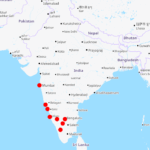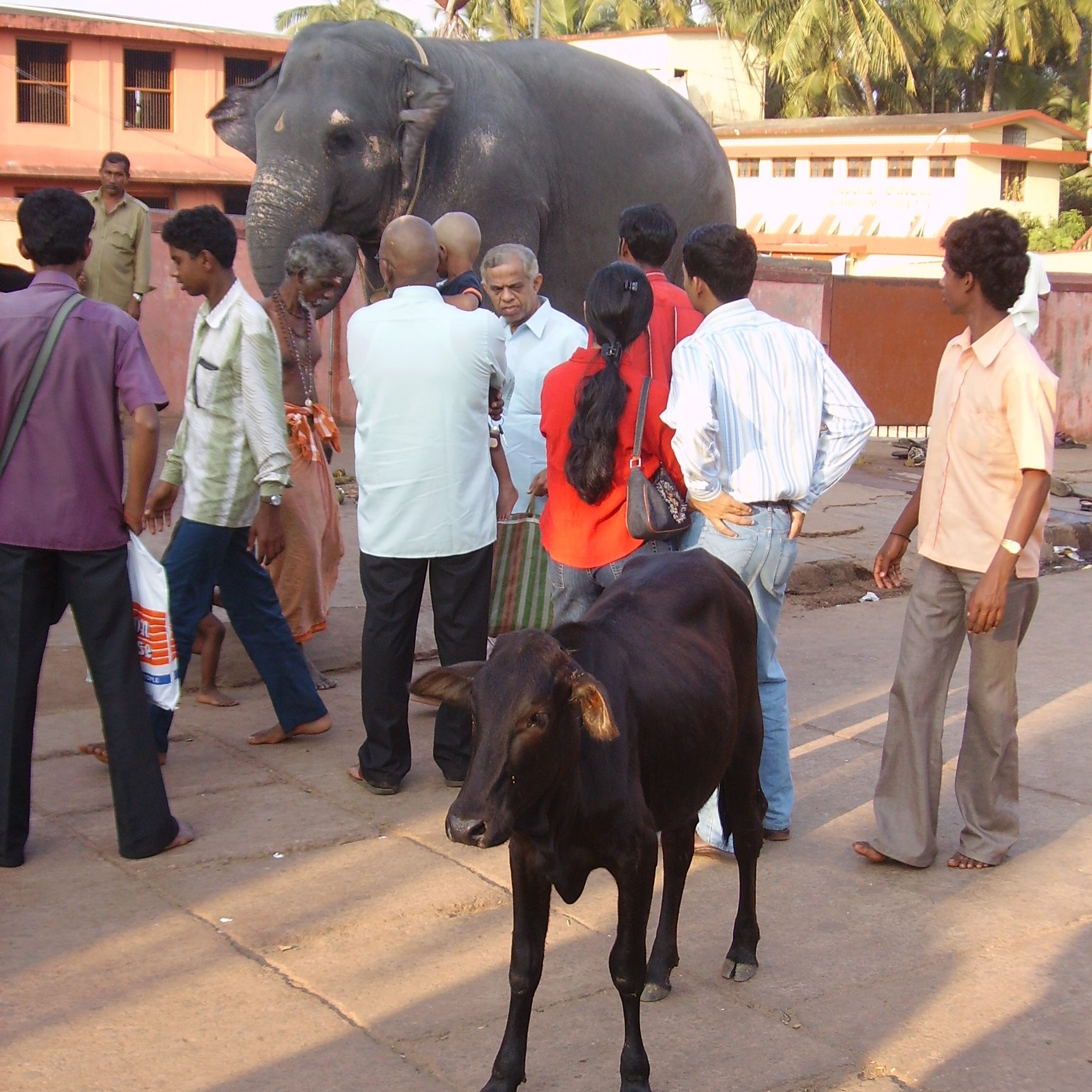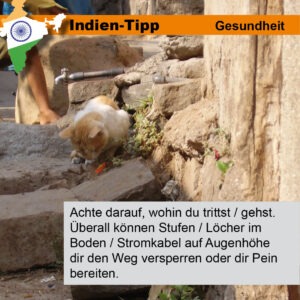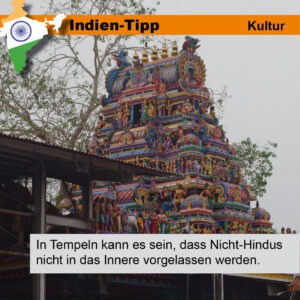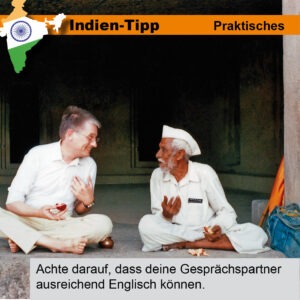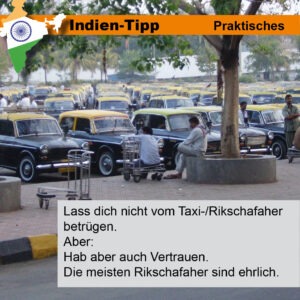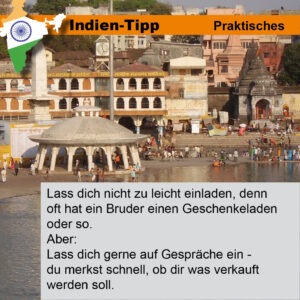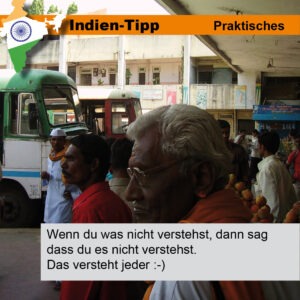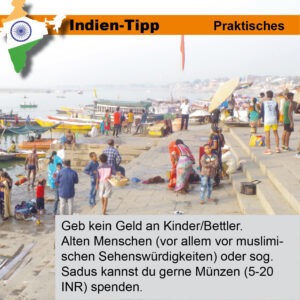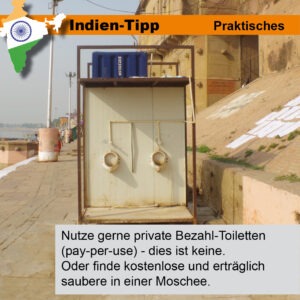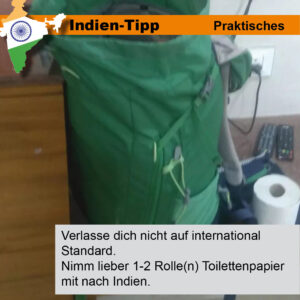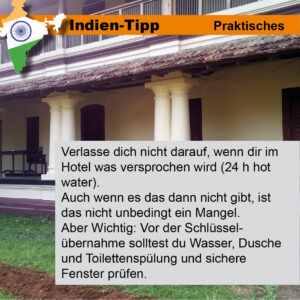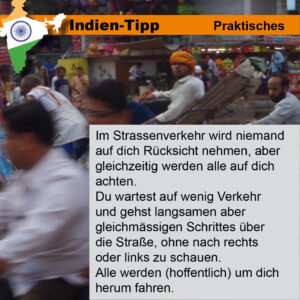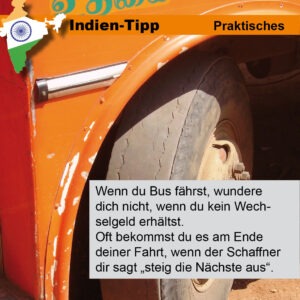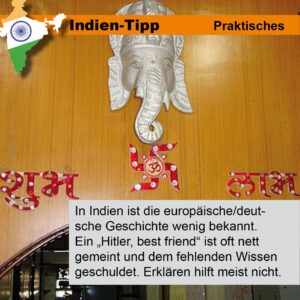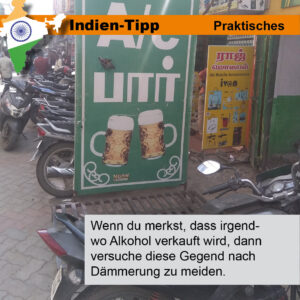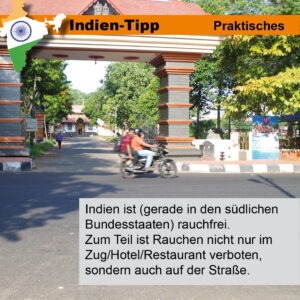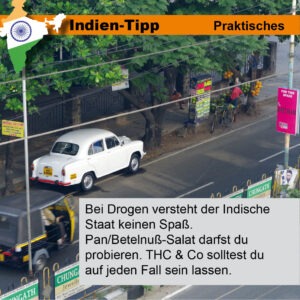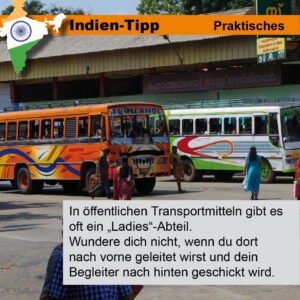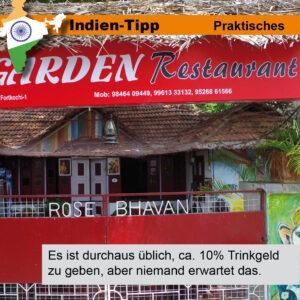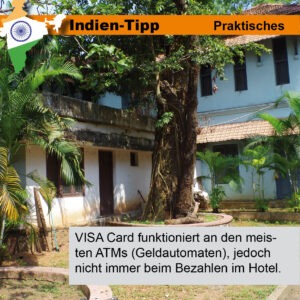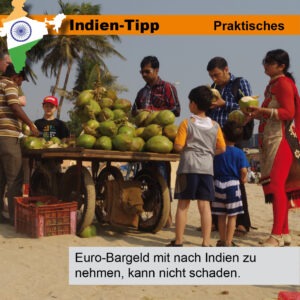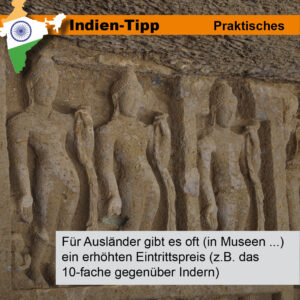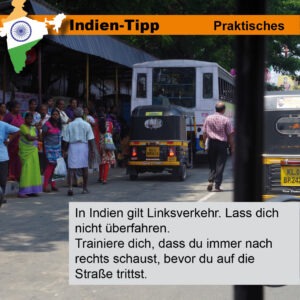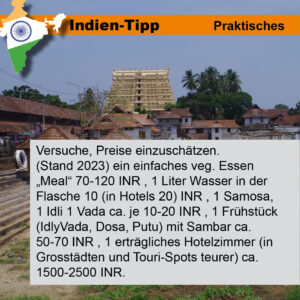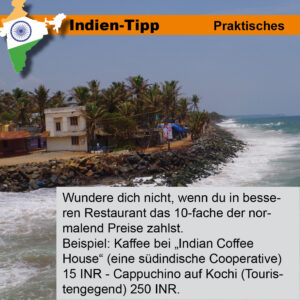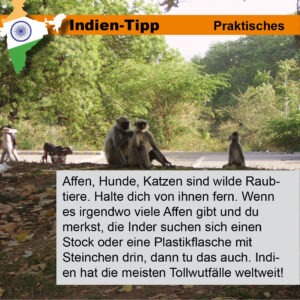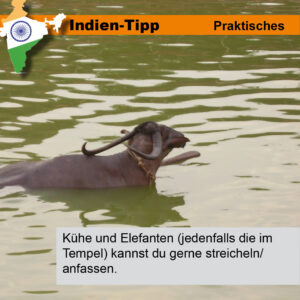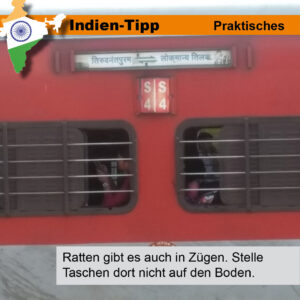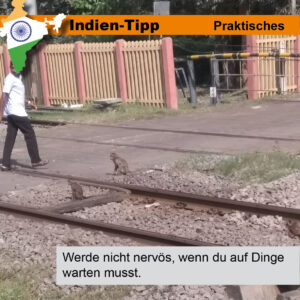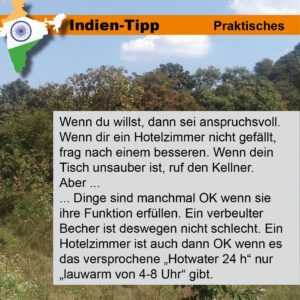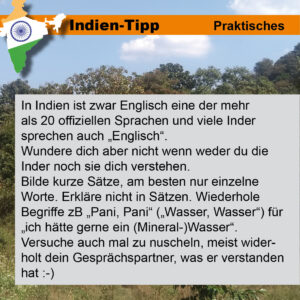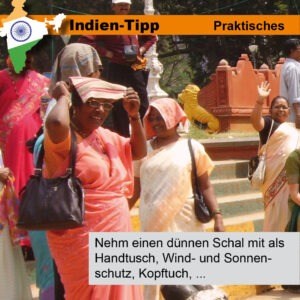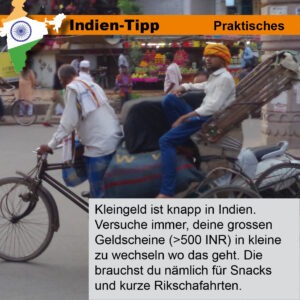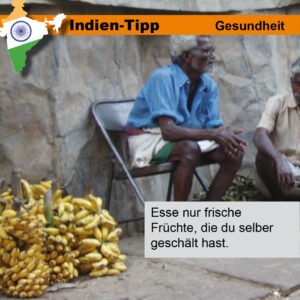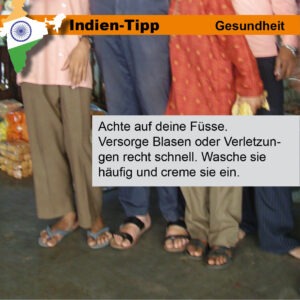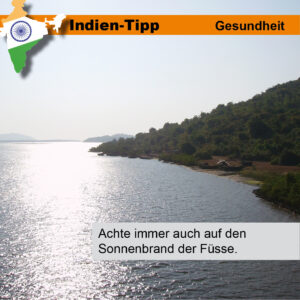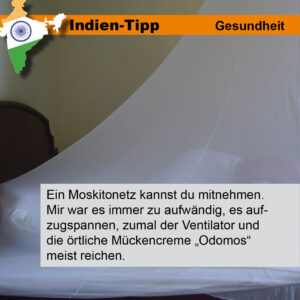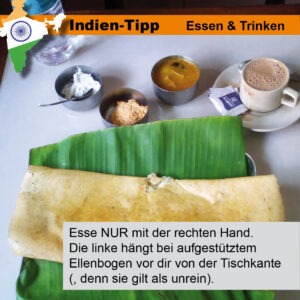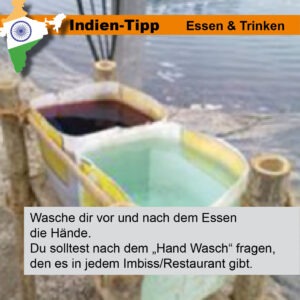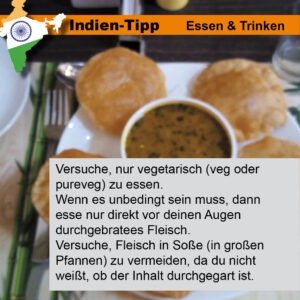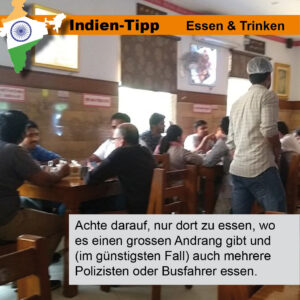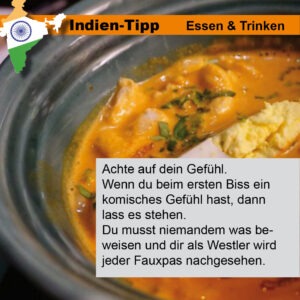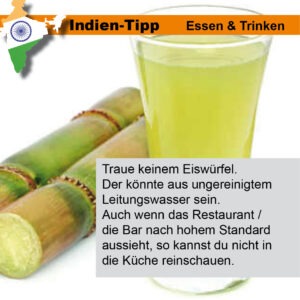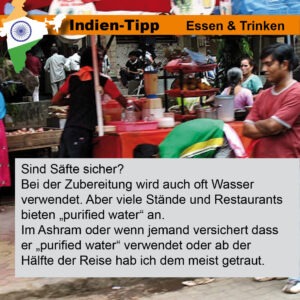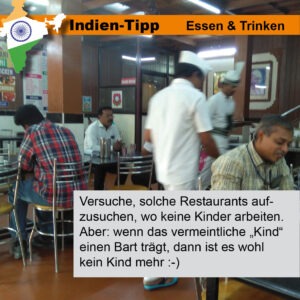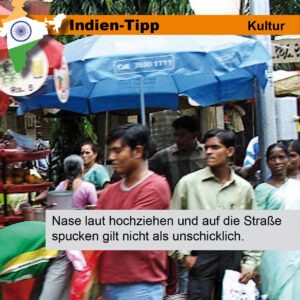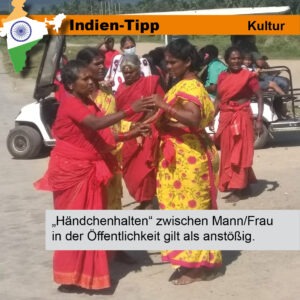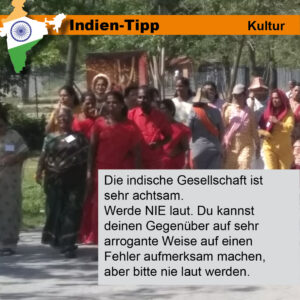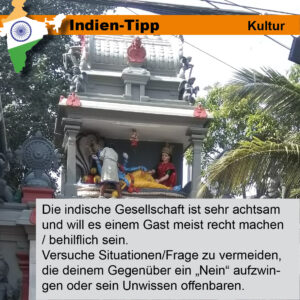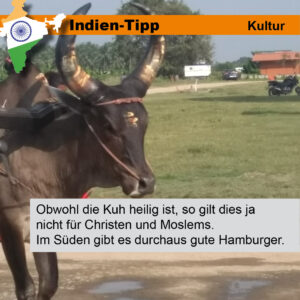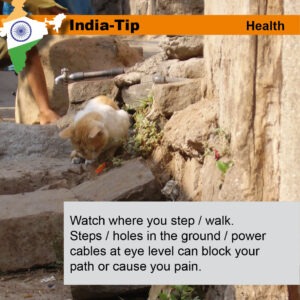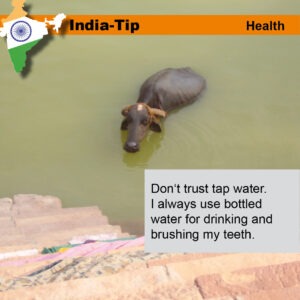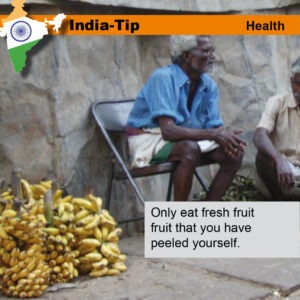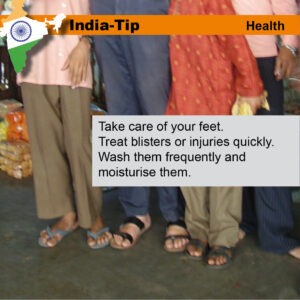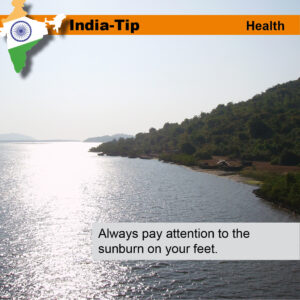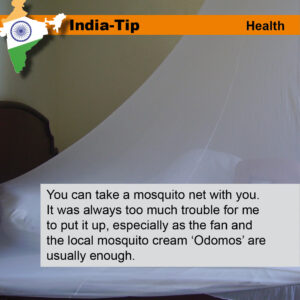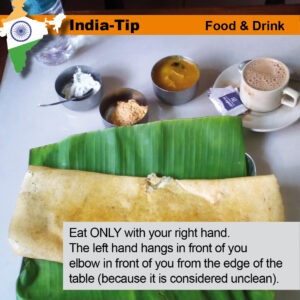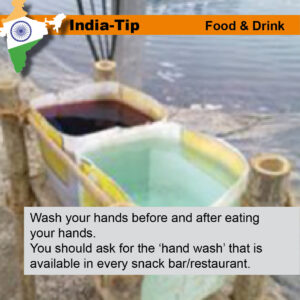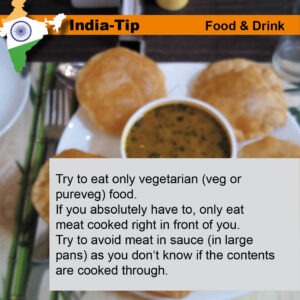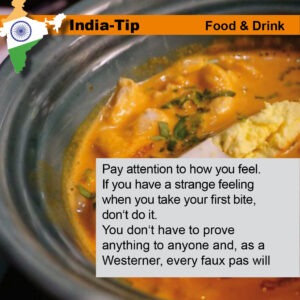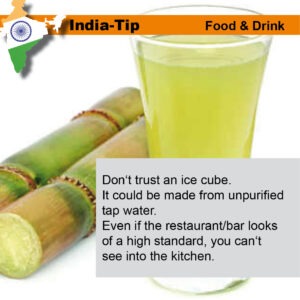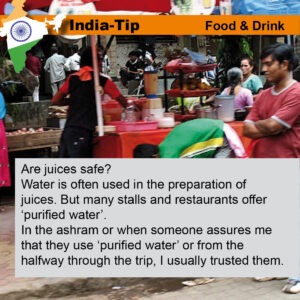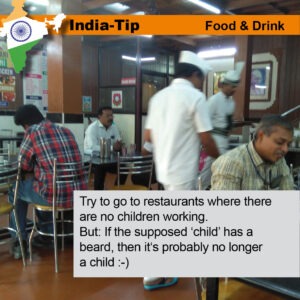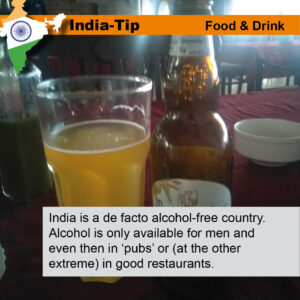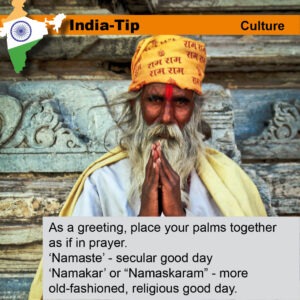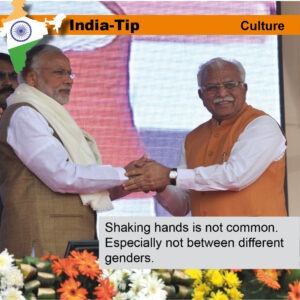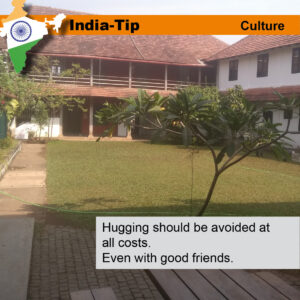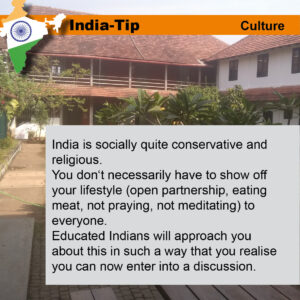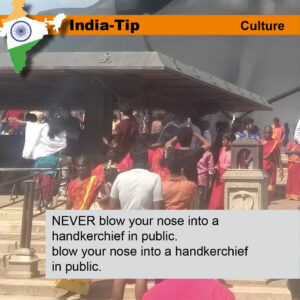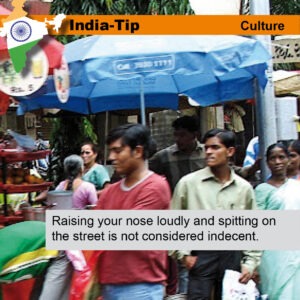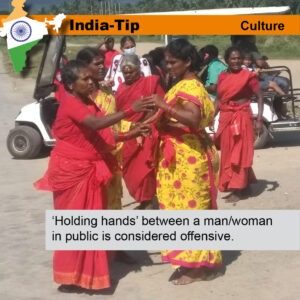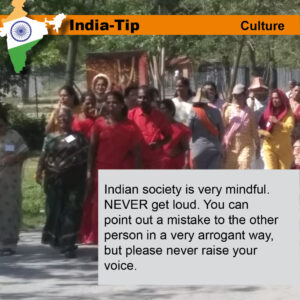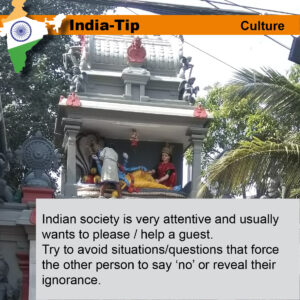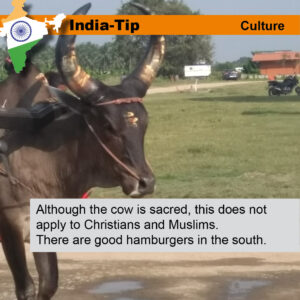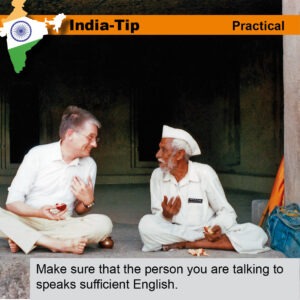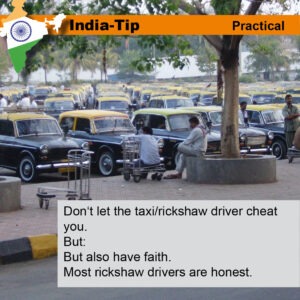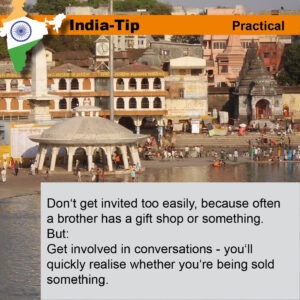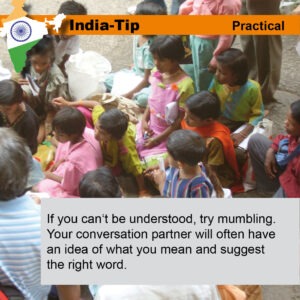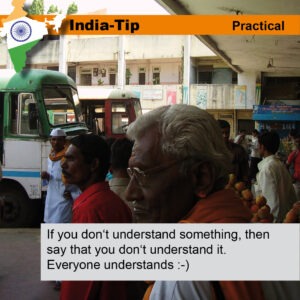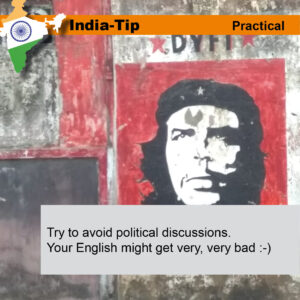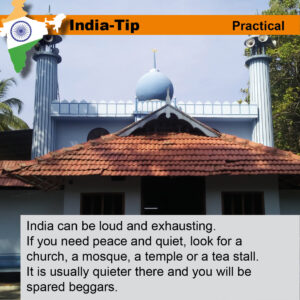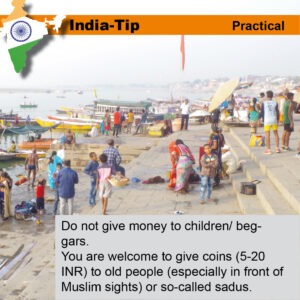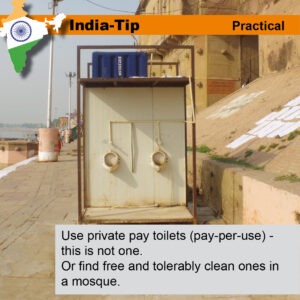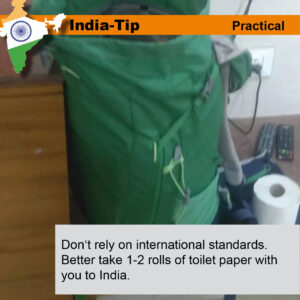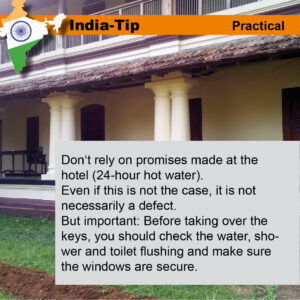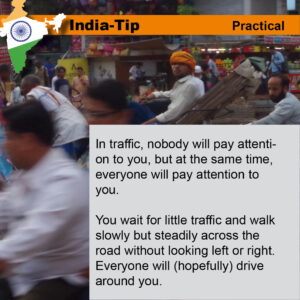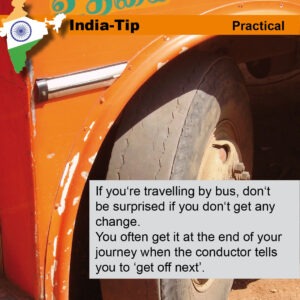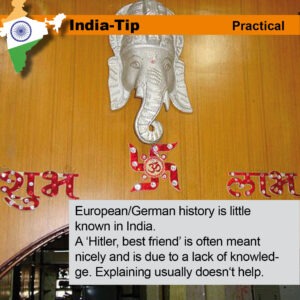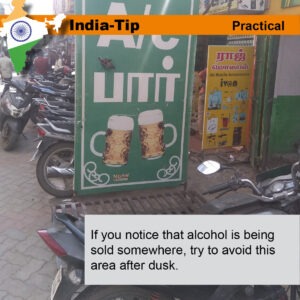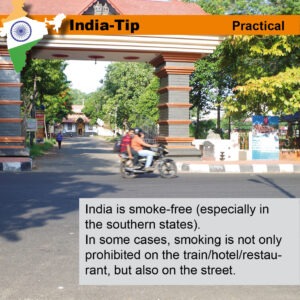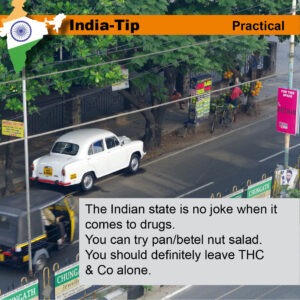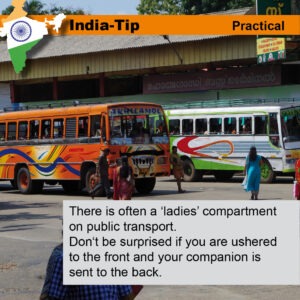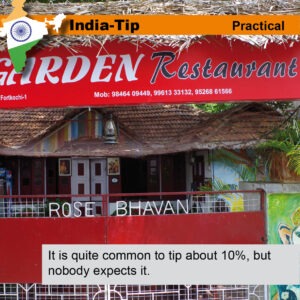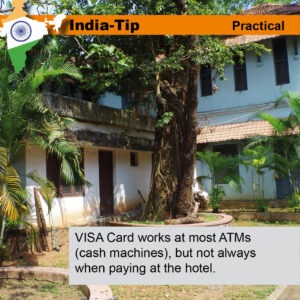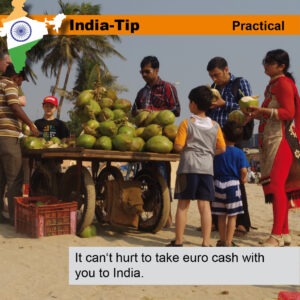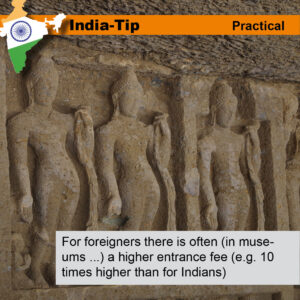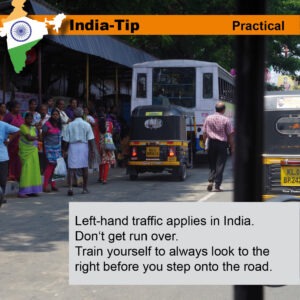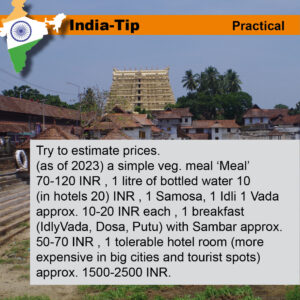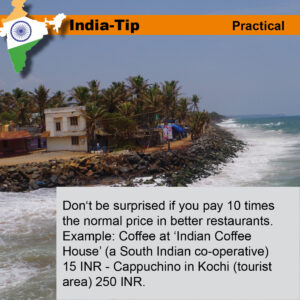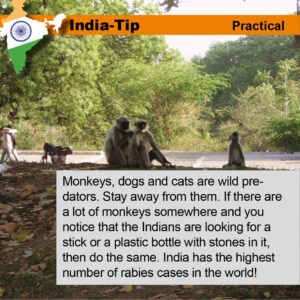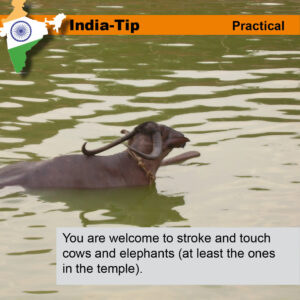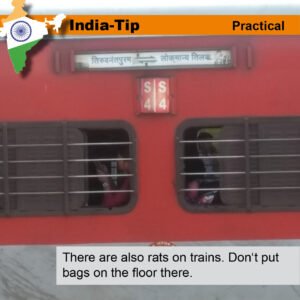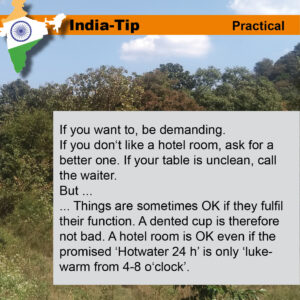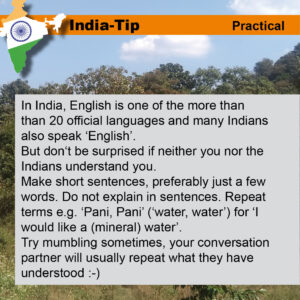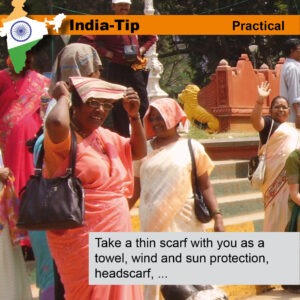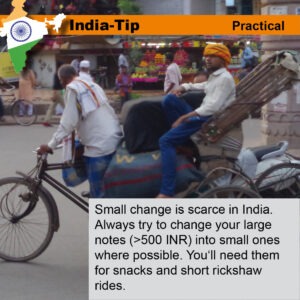
Mumbai – Goa – Kundapur – Gangooli – Manipal – Udupi – Karkala – Madikeri – Mysore – Chamundi Hills – Bandipur National Park – Somanathpur – Mumbai
Finally back in my beloved India. This time it’s a relaxed journey along the west coast, first down and then up into the Western Gats. A dream for the eyes, ears and palate.
Mumbai
And again, barely six months after our last trip, we, me and my sweetheart, are back in Mumbai. At the time, we had no idea that this would be our last time in India for several years.
We had planned a beautiful route along the west coast of South India, from Mumbai via Goa on to Mangalore, then we wanted to continue on to Bangalore. Not everything turned out as planned, but we were able to experience new, unplanned spots. |
Goa
A stopover in the city of the conqueror, in Vasco da Gama, after we had only been able to visit the fabulously clean and well-run railway station on our previous trips.
This time we stayed in the largest city of the former Portuguese colony in India. As it’s shortly after Christmas, I have a ‘strange’ experience: in front of the city’s main church, I stumble more by chance into a performance of a nativity play. The temperature is tropical, I’m sweating – and in front of me are young Indians dressed in red coats with red hoods and white pompoms, performing a Christmas play – wow.
In the evening we go out to a cosy restaurant. And at the neighbouring table, a young family with a young son who is allowed to do anything and who is not stopped in his attempts to spread the food on the table and floor. ‘Someone will clean this.’ The waiter will sort it out.
We didn’t visit the beach. No time. But it’s not running away from us either. I wasn’t really in the mood for the beach and techno/goa music anyway. |
Kundapur – Gangooli
Onwards to Kundapur and Gangooli, the middle of nowhere at the end of the world.
Our ‘uncle’s’ brother lives in Gangooli with his family and runs a brickworks in the village. Traditionally, the family is a farming family with a second mainstay, quite wealthy with a large house, cows, a company, a car and a driver.
On the way to Gangooli, we have a very special experience: we arrive in the evening in a small village with only two hotels, both of which are fully booked. The bus has also moved on in the meantime. It’s late afternoon, the sun is about to set and me and my future wife have no accommodation for the night. HELP … what to do? But as is so often the case in India, a solution is found. We keep asking at the hotel, sit down in the foyer, wait, ask again. As evening falls, what a coincidence, the staff find us a room after all – luckily. So somehow everything works in India.
The next day, we are picked up by the family’s driver. We drive a beautiful route along a coastline on the river delta near Gangooli. When we arrive in the village, our host shows us his house and treats us to food and drink, although we are not entirely sure whether the crockery we are eating from will be used afterwards. We get the feeling that the religious Brahmanism that the family practises is somewhat traditional. This also means that contact with the unclean/untouchable, which are non-Hindu Europeans, should be avoided.
The visit to the brickworks was also an experience. In India, the company is regarded as modern and of high quality. We were not entirely comfortable with it. We hadn’t had much experience with Indian industrial companies and were really looking forward to what awaited us. We were surprised at how little the work is done by machine; the bricks are largely made by hand using simple moulds. The workers seemed quite young to us, we can’t really say whether child labour was used there. There are certainly good working conditions in the brickworks. The Indian economic system very often relies on traditional patriarchal structures in which the factory owner also has to look after his employees socially. And it was the same here.
A great experience off the beaten tourist track. |
Manipal – Udupi – Karkala
Originally, we wanted to visit the city of Mangalore on the west coast of the state of Karnataka on this trip. However, as we always tell our friends in advance when we are in India, this time we were warned not to go to Mangalore. There had been a malaria outbreak there.
So we immediately take another bus into the Western Gats – unlike originally planned. We travel through Manipal, Udupi and Karkala, small villages on the way to Madikeri. |
Madikeri
So we have inadvertently arrived in Madikeri, a small town in the mountains of the Western Gats in southern India. Cardamom is grown here, as well as coffee and pepper.
What really surprised me in Madikeri was the fact that pork was served in several restaurants, even though it is frowned upon by Hindus and forbidden by Muslims. But obviously there are religious groups living in this area who deal with Hindu or Muslim duties in a completely different way than we expected.
The forests with their waterfalls were a dream for us. Here in Madikeri, you can experience how healthy 3-variety cultivation is still practised. Palm trees are grown together with coffee and pepper in the same place. The plants help each other. And since manual labour is quite inexpensive in India, there is no need to worry about mechanical harvesting.
The area around Madikeri is considered a coffee-growing region in India. And I have to admit that I really enjoyed the coffee there. Years later, I will realise that my beloved India Monsooned Malaba Arabica, which I like to buy from my favourite roastery in Munich, is grown in this very region. |
Mysore
Then it’s on to the south Indian city of Mysore. We are accommodated in the legendary ‘Mysore Dasaprakash’, which unfortunately no longer exists in this form.
The Dasaprakash is located in the centre of the city within walking distance of the Maharaja’s Palace and is notable for the fact that no children or young people are employed as waiters. Traditionally, older staff are also employed. The rooms have a ‘walkway’ facing the inner courtyard. Breakfast can be ordered via a shared telephone in the corridor, the rooms are clean but clearly showing their age. Everything is traditionally painted in a light blue colour.
The city of Mysore is always worth a visit. It is quiet, chilled out and the palace in the centre of the city is very impressive, not only because it is illuminated at 8 pm at night. Today it serves as a museum. |
Chamundi Hills
If you’re ever in Mysore, then a day trip to Chamundi Hill is definitely on the agenda. At the top of the hill there is a large temple complex in honour of Chamundi. This is also a place where tourists can marvel at local pilgrims, of whom there are many in India.
It is a good idea to choose either the ascent or the descent via the long footpath. This is where you will find one of the largest Nandi statues, which was created from a single piece of granite. This Mysore Nandi is now 350 years old and should be visited by travellers. |
Bandipur National Park
We then travelled south to Bandipur National Park. However, we had to organise our accommodation in the guesthouses available there at a branch of the Forest Department in Mysore. But that’s the exciting thing about travelling to unknown worlds. At that time in this area, we were still unknown beings, greeted in a friendly manner by schoolchildren, for example.
On the way to Bandipur National Park, our bus took an adventurous route characterised by hairpin bends. Fortunately, a priest was present, so we were able to perform a puja on the way for a ‘good arrival’.
First things first: we didn’t see any tigers during our visit to Bandipur, although there are supposed to be some tigers in the park. Instead, we saw elephants, wild boars and various birds right in front of our terrace. It’s a strange situation, standing in the meadow and watching some elephants pass by. Great, you can draw them really well. A little closer and … the Indian tourists start to get very nervous. Is the elephant itself perhaps a dangerous animal after all? Yes. So you might want to keep your distance.
But there are also tamed elephants in Bandipur National Park. At our time, there was also a baby that could be stroked under its mother’s supervision. Unbelievable: a mini elephant like this doesn’t move a bit when you push against it. Nothing simply happens. I don’t want to meet it with unfriendly intent. |
Mumbai
We then travelled back to Munich from Mumbai. |
